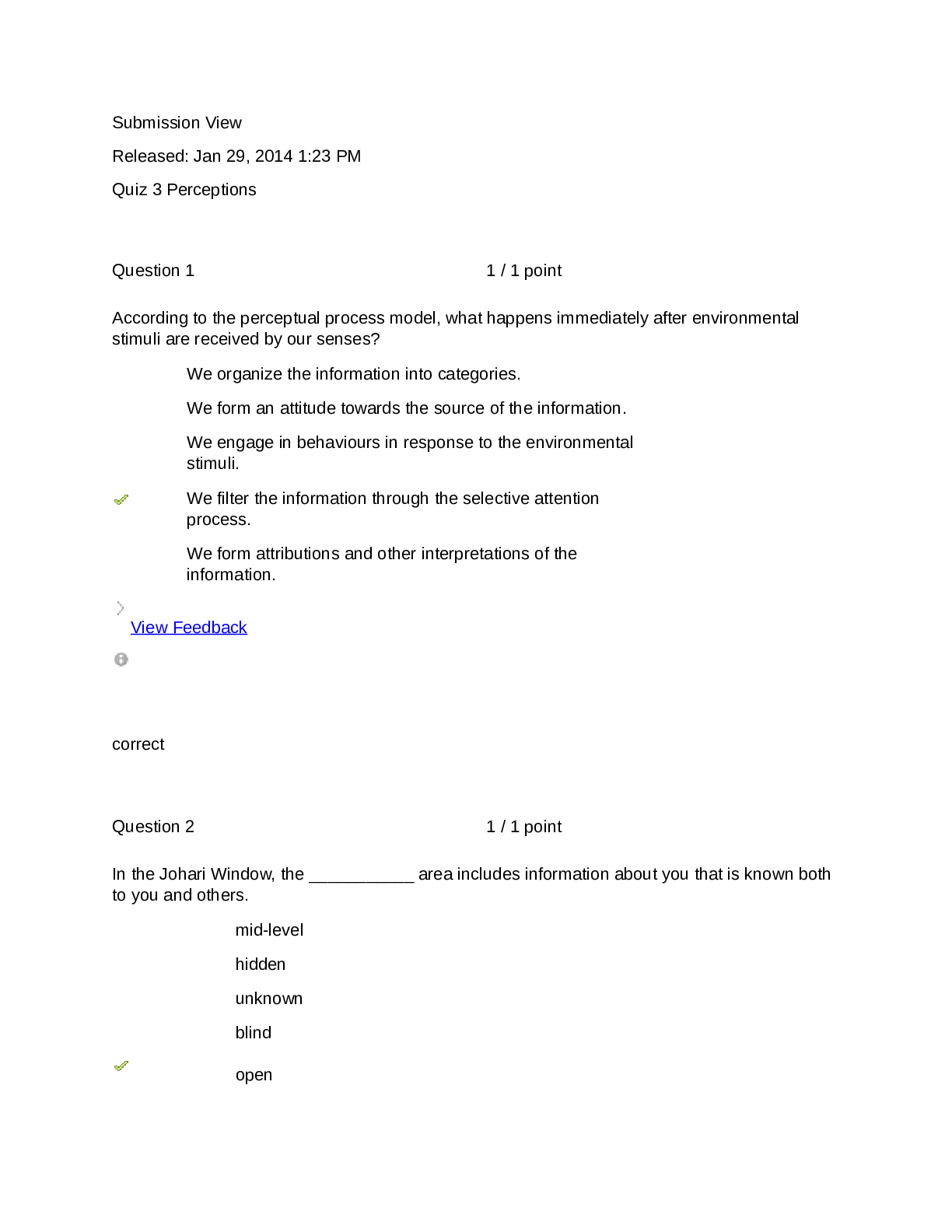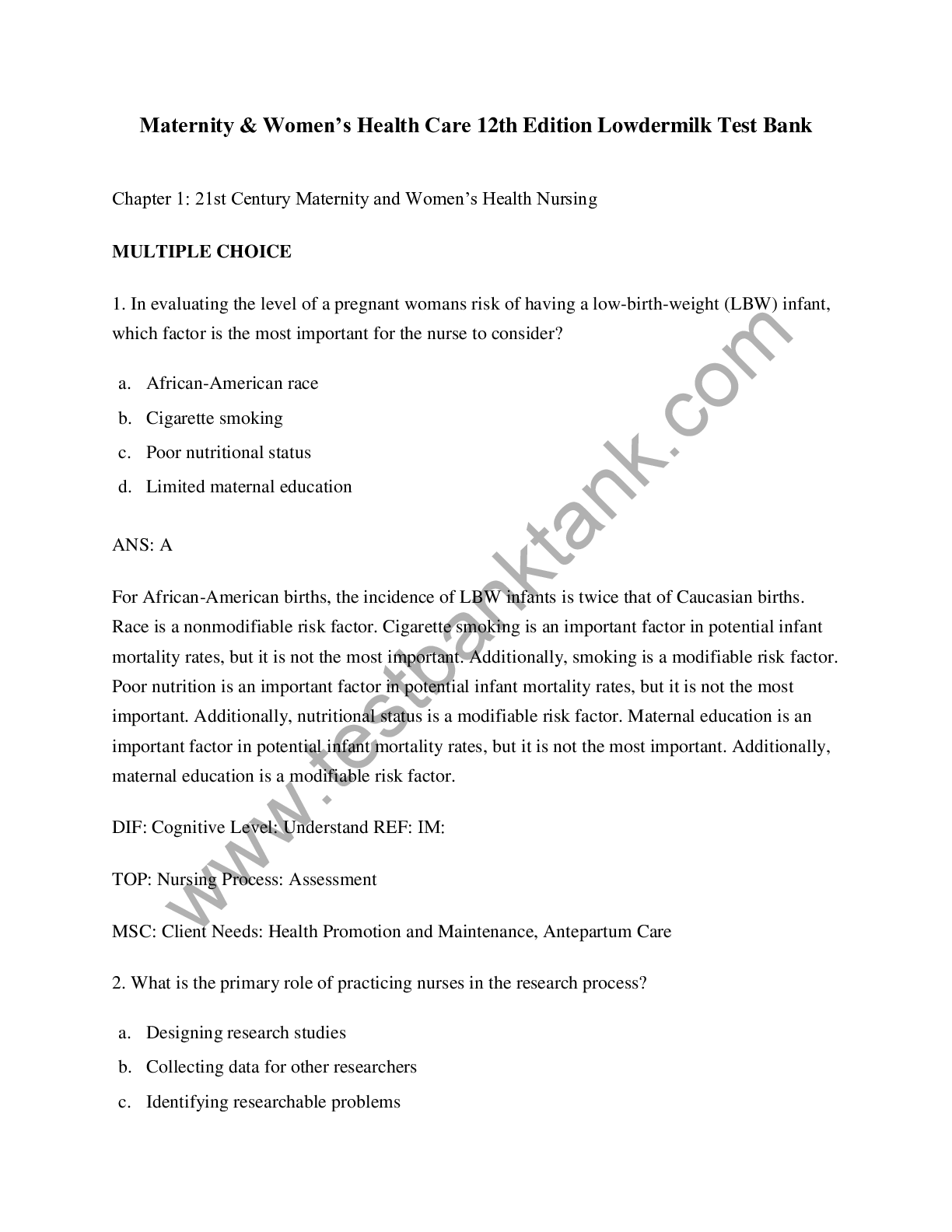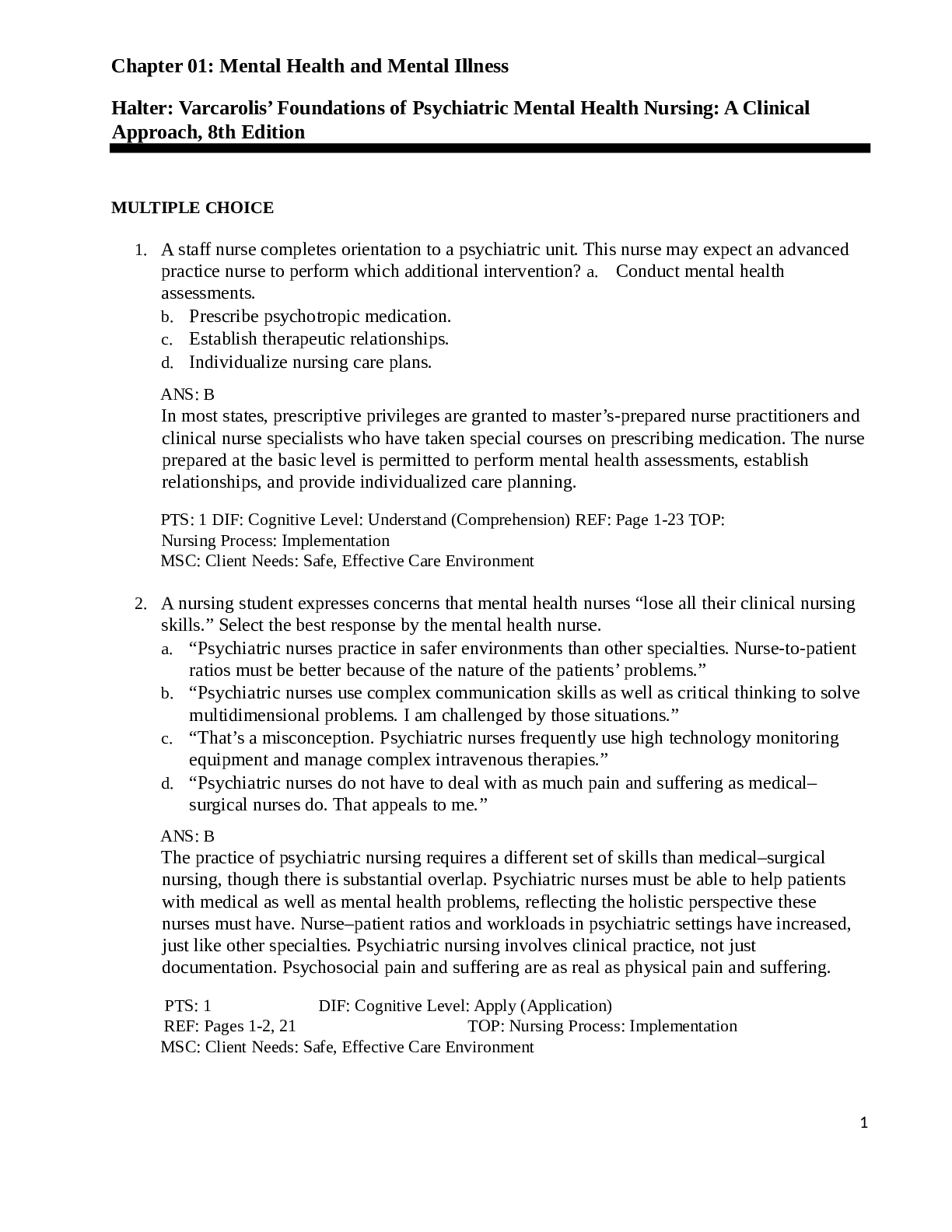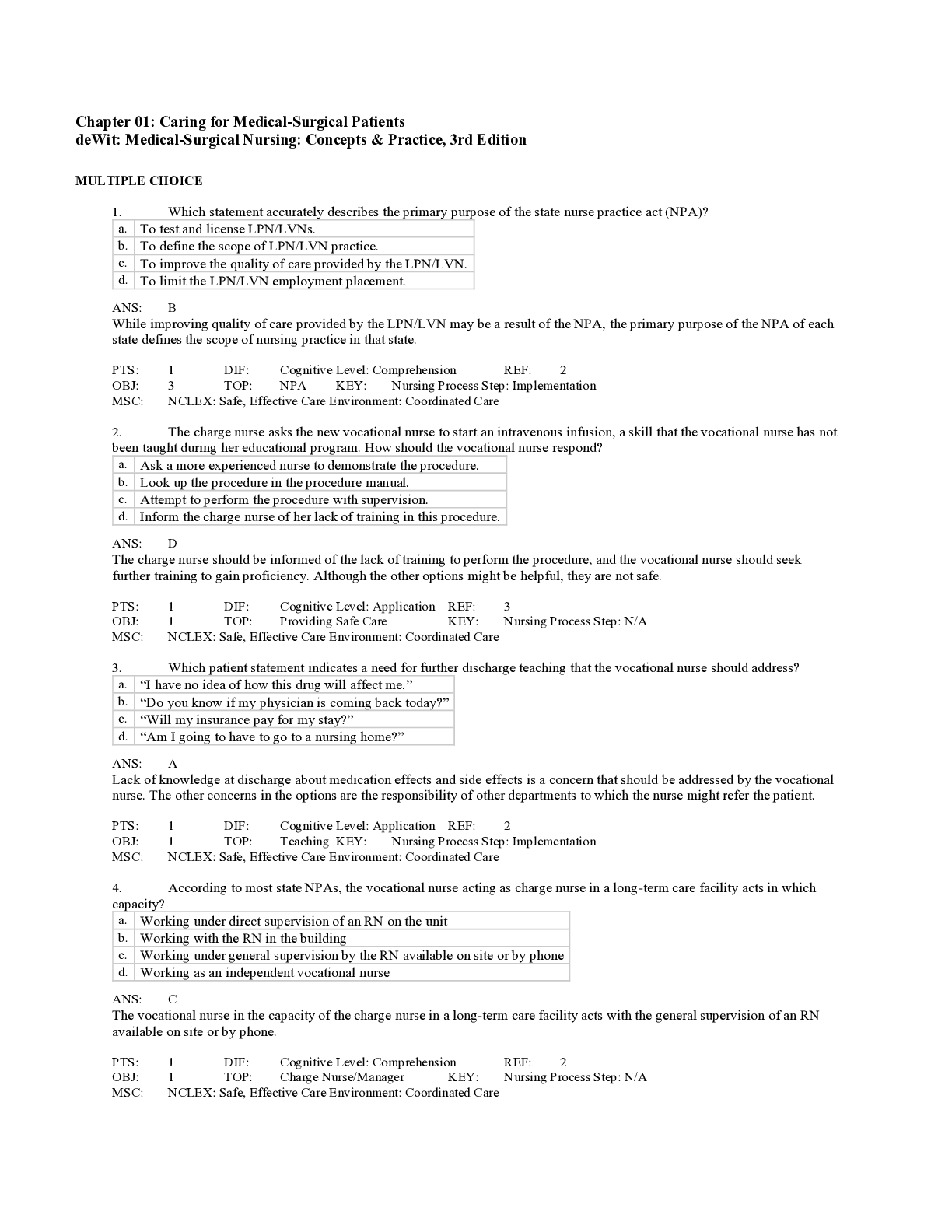Education > TEST BANKS > SPECIALIZATION - ENGLISH A Reviewer for Licensure Examination for Professional Teachers ( ALL ANSWER (All)
SPECIALIZATION - ENGLISH A Reviewer for Licensure Examination for Professional Teachers ( ALL ANSWERS ARE 100% CORRECT AND IN BOLD )
Document Content and Description Below
SPECIALIZATION - ENGLISH A Reviewer for Licensure Examination for Professional Teachers 1. Readers find pleasure in the form, technique and style of writing a well - constructed plot, vivid charact... erization, unusual imagery, expressive language, etc. In other words, all elements are combined to create an over-all order or coherence. What does this show about literature? A. Literature is language C. Literature is aesthetic B. Literature is expressive D. Literature is true 2. Which function is illustrated when aside from its natural gift of pleasure to the reader, it provides illumination that enables us to see, interpret and transform our world? A. Literature as a form of escape B. Literature provides aesthetic satisfaction C. Literature as a form of pleasure D. Literature as a form of engagement 3. Why is literature said to be fictional? I. Literature can be re-ordering of the real world in which people and experience, though drawn upon from actual life, and re-shaped l, altered, given new psychological insights. II. The lack of factuality is strengthened by writer's artistic control in the literary work. III. The writer's artistic control has the effect of stylizing the materials of the work, setting it apart from the context of the real: nevertheless, making the reader enjoy and contemplate on it, reject it, even show aesthetic distance. A. I only B. II only C. III only D. I, II, III 3. Why is literature said to be expressive? I. Literature expresses the writer's personality, emotions, amd beliefs no matter how writers may try to reduce their presence as much as possible. II. Literature has the ability to create an emotional response in the reader. III. Literature imposes order on language, characters, events and details. A. I only B. II only C. III only D. I, II, III 4. Which theory enlightens the approach used by a literary critic who is mainly concerned with the background of a literary work - the social conditions, political developments, religious ideasand practices, and modes of thinking current at the time of its production or the period it represents. A. The Work in Relation the Word it Imitates (Mimetic Theory) B. The Work in Relation to the Author (Expressive Theory) C. The Work and its Readers (Pragmatic or Affective Theory) D. The Work as an Entity in Itself 5. Which element of fiction refers to the universal aspects of life as the writer perceives them to be so that it determines his choice and organization of action, characters, setting and point of view? A. Plot B. Setting C. Character D. Theme 6. Which refer to the author's or narrator's predominant attitude towards the subject which may be happy, tragic, loving, tender, cynical, angry, detached, satirical, apathetic, etc? A. Setting/atmosphere C. Tone B. Point of view D. Theme 7. Which form of expository prose presents the personal view of its writer on a topic? It is said to provide light as well as delight for the author tries to charm his reader with his prose as he discusses his ideas or experiences? A. Paragraph B. Discourse C. Essay D. Composition 8. Construct Procedure is an interesting technique that teachers can use to help students have a graphic overview of an essay. Which of the techniques below is used when information such as title, subtitles, introductory paragraphs, first sentence, summaries, pictures, maps and diagrams? A. Survey-reading C. Scanning B. Study-type reading D. Skimming 9. According to Aristotle, plays classified as tragedy produce an effect where our baser emotion of lust, hatred, jealousy, feat, self-pity, greed, avarice, sloth, etc. are cleansed or purged because of dread in the tragedy that befall the tragic character would happen to us. In the process, we counter check ourselves and innobled. How is this cleansing process called? A. Caveat B. Kinesis C. Catharsis D. Catharrses 10. These are true about the reasons for teaching literature to students EXCEPT one. Which is the exception?A. It contributes to the holistic development of an individual B. It shows value to language experiences C. It provides an escape from one's reality D. It develops mostly the analytic the analytic skills of learners 11. Teaching literature is seeking the opportunity for students to relate and respond to the themes and issues by making a connection to their personal lives. Which model is described? A. Cultural model C. Personal growth model B. Language model D. Philosophical model 12. Which model views literature as a source of facts or information and the teacher is transmitter of knowledge and information to the students? A. Personal growth model C. Philosophical model B. Cultural model D. Language model 13. What is the most innovative way of teaching literature? A. Students are asked to read a literary piece at home B. Students memorize the stanzas of a poem C. Students create a collage of their experiences in relation to the story read in class D. Students explain difficult words orally 14. How do you make the story of Biag Ni Lam-ang relevant and interesting to the life of learners today? A. Let them make a multimedia presentation of the main characteristic of Lam-ang as it is seen today B. Allow the learners to translate key events in their own mother tongue C. Let them discuss the conflicts in the story that they can relate to D. Let them write their own ending of the story 15. Which is the best way prepare in teaching of literature? A. Enjoy the literature B. Choose a literary genre that appeal to the nature of your learners C. Memorize the essentials of the piece to be read in classD. Plan for an output that learners can create based on the literary piece 16. Which can be used to teach learners to organize information on the major and minor characters in a text? A. Chunking C. Storyboarding B. Character charts D. Note taking 17. If you want to help students in processing dilemmas experienced by characters in a text, the most appropriate strategy to use is ________. A. readers theater C. word tree B. chunking D. life road maps 18. Which strategy will help students better understand key life events of historical or literary figures? A. Chunking C. Word tree B. Readers theater D. Life road maps 19. You want you students to keep tract of main ideas and supporting details in a narrative by letting them illustrate important scenes in a story. What is the most appropriate strategy that you will employ? A. Chunking C. Storyboarding B. Fishbone diagram D. Note taking 20. These are specific modeling techniques in literature-based instruction EXCEPT one. Which is the exception? A. Reading aloud C. Cooperative learning B. Shared writing D. Providing scaffolds 21. Which of the following is not suitable in activating prior knowledge of students? A. Read and sketch B. Reading several selections C. Thematic organization of related pieces of literature D. Self-questioning 22. Which is not true about teaching literary appreciation in the classroom? A. It develops a sense of self-understandingB. It helps in reflecting of one's sociopolitical issues in one's culture C. It facilitates language proficiency D. It can only be facilitated through classic literature 23. In selecting instructional materials, the following factors need to be considered EXCEPT one. A. Consider the varied interests, abilities, and maturity of the learners B. Stimulate growth in factual knowledge, literary appreciation, and aesthetic values C. Promote faith and confidence in other cultures D. Represent the many religious and cultural group 24. Which does not belong to the group? A. Textbooks C. Specimens of real objects B. Collaborative activities D. Software 25. Which criterion in choosing instructional materials ensure the consistency and reliability of the content? A. Controversial issues represented both sides B. Authors are competent and qualified in the field C. It contributes to the promotion of cultural values D. Topics on human growth and development are represented with dignity and appropriate to the age of the learners 26. Why do teachers need to use instructional materials in teaching language? I. They allow students to interact with words, images and ideas in ways that develop their literacy skills. II. Learning cannot be facilitated without these materials [Show More]
Last updated: 2 years ago
Preview 1 out of 210 pages
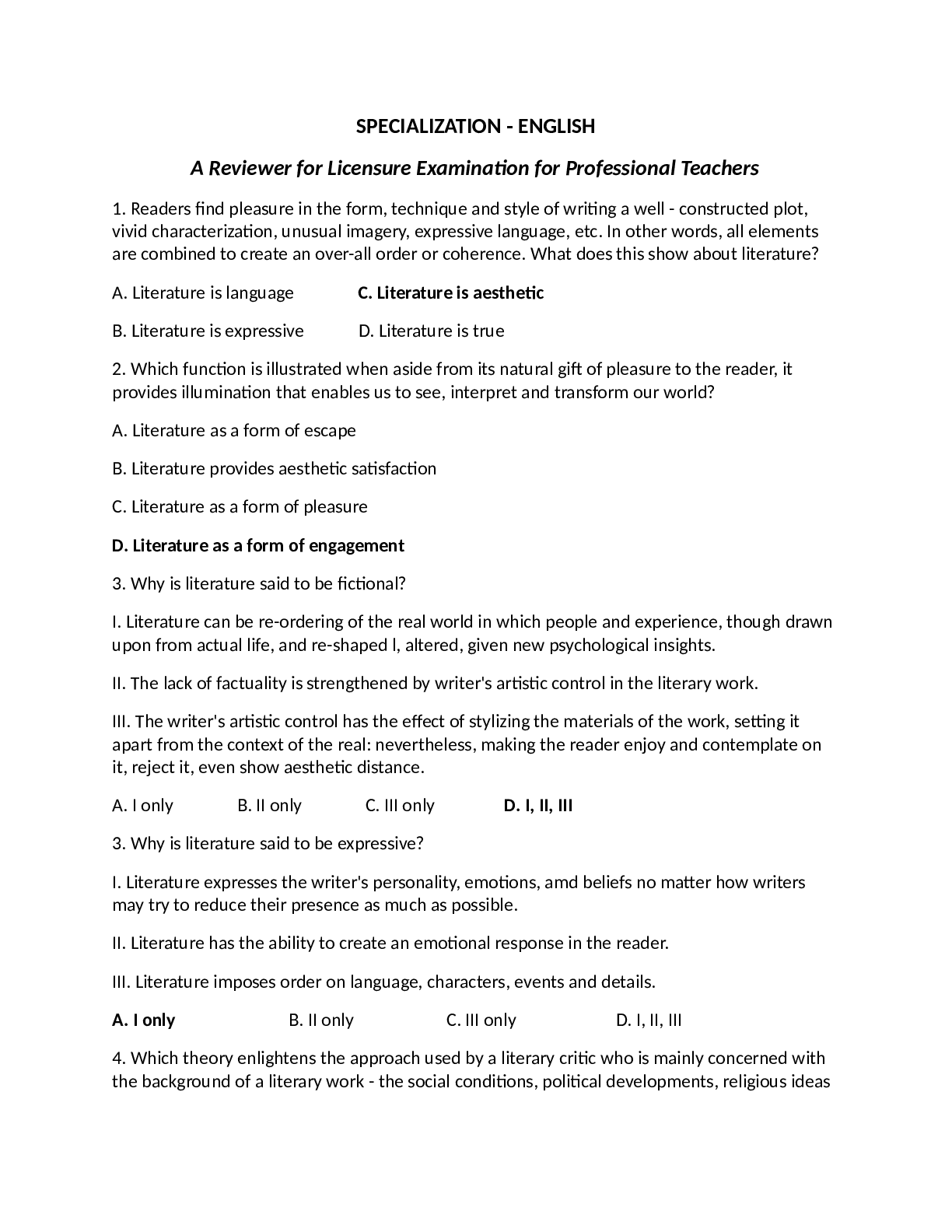
Buy this document to get the full access instantly
Instant Download Access after purchase
Buy NowInstant download
We Accept:

Reviews( 0 )
$20.00
Can't find what you want? Try our AI powered Search
Document information
Connected school, study & course
About the document
Uploaded On
Jun 08, 2021
Number of pages
210
Written in
Additional information
This document has been written for:
Uploaded
Jun 08, 2021
Downloads
0
Views
122



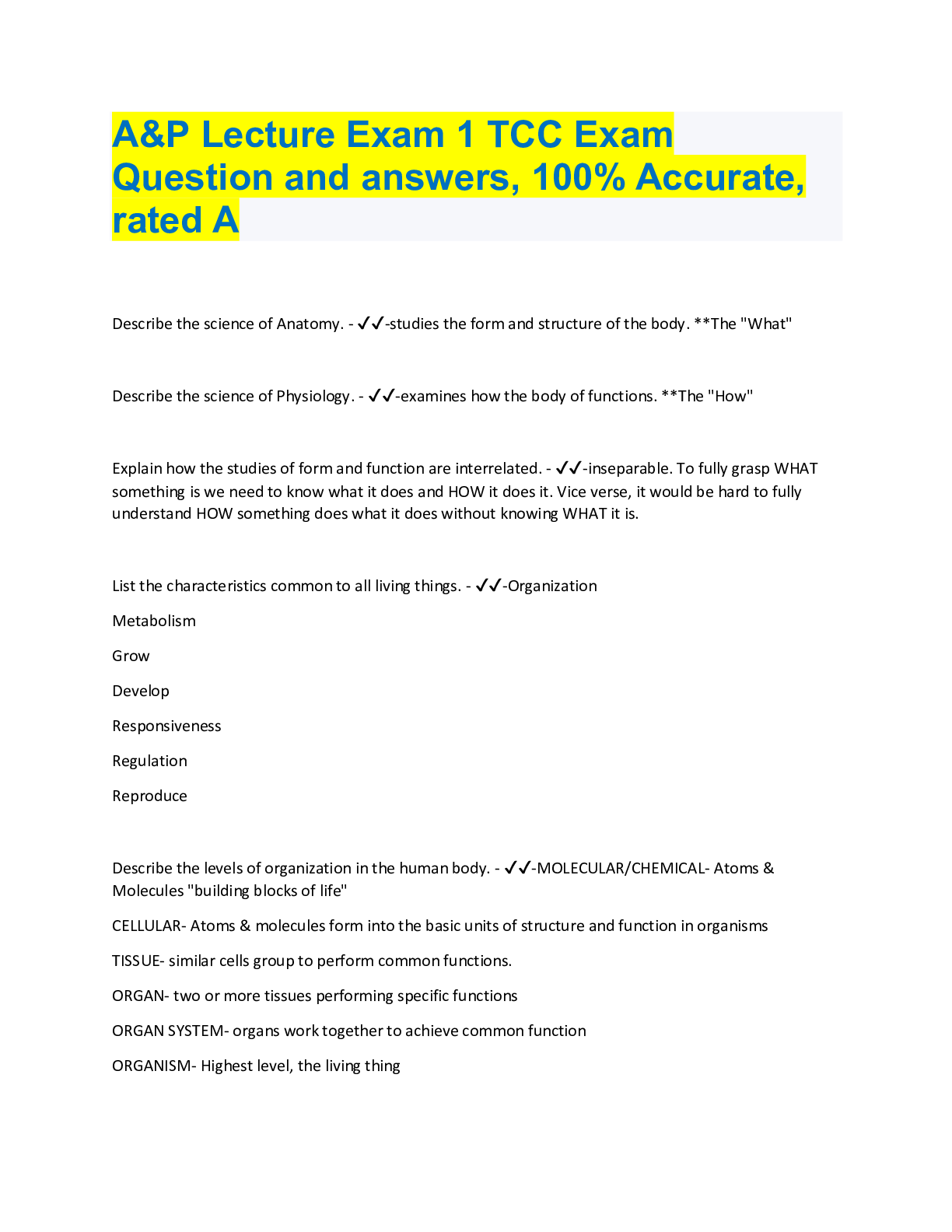
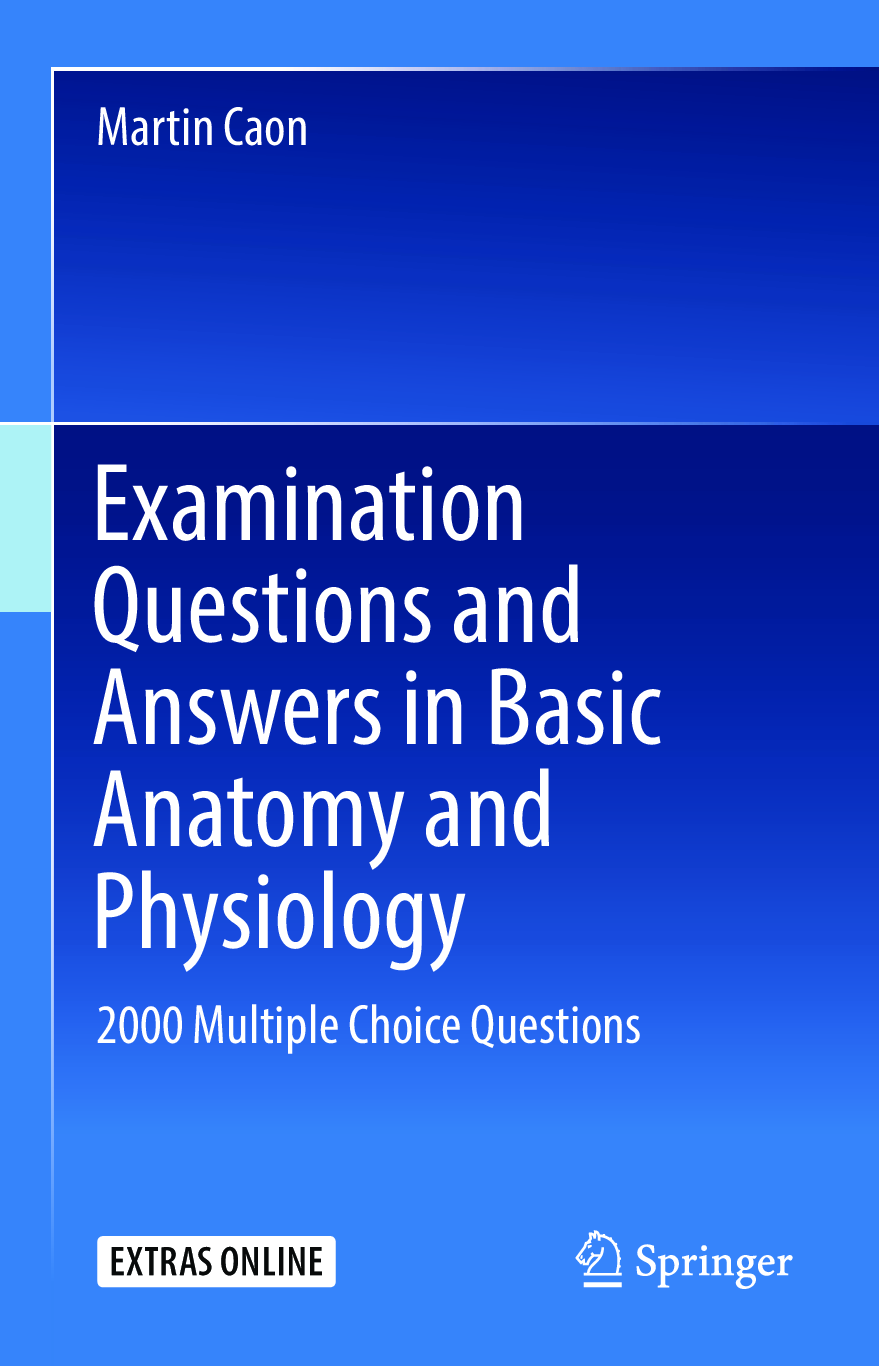

.png)

 David L.png)



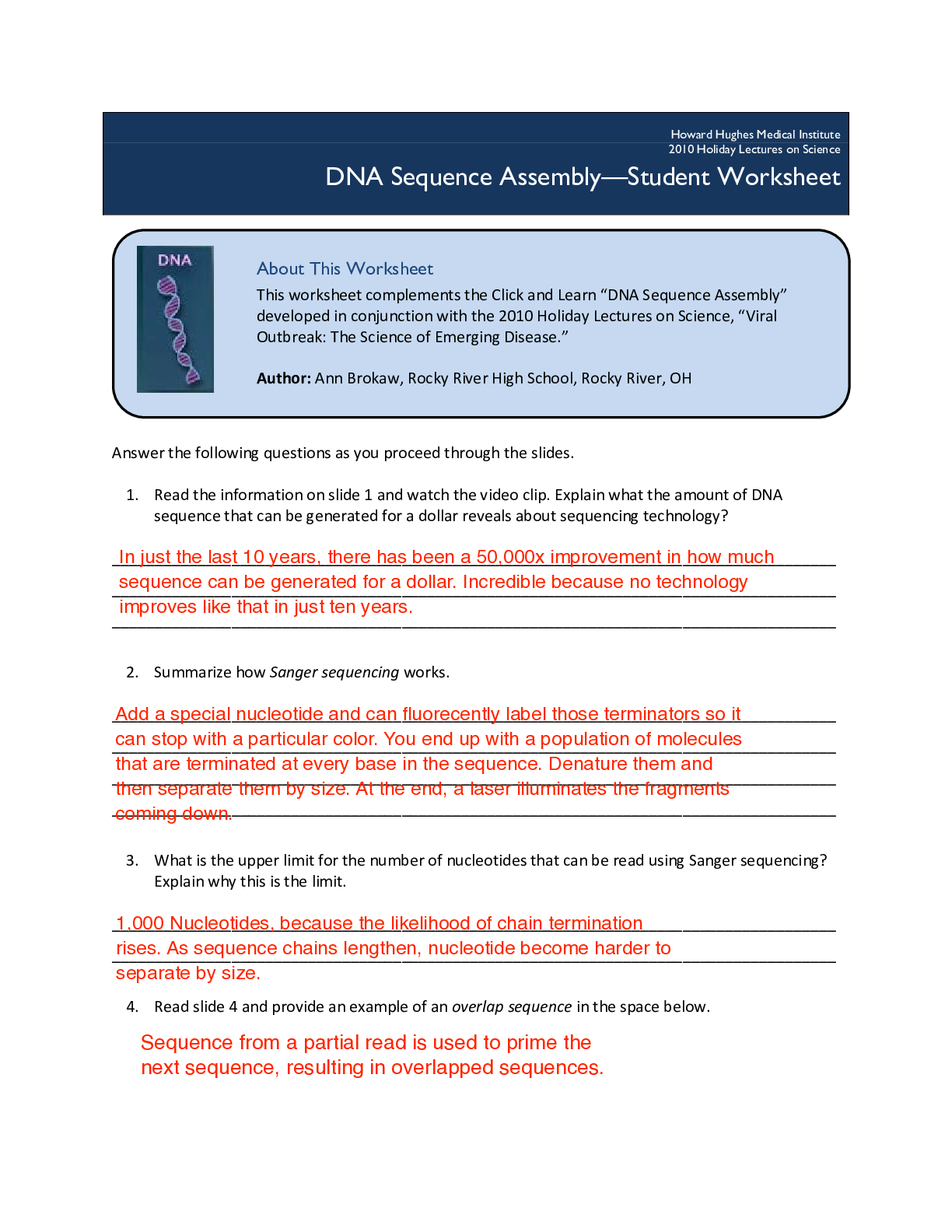
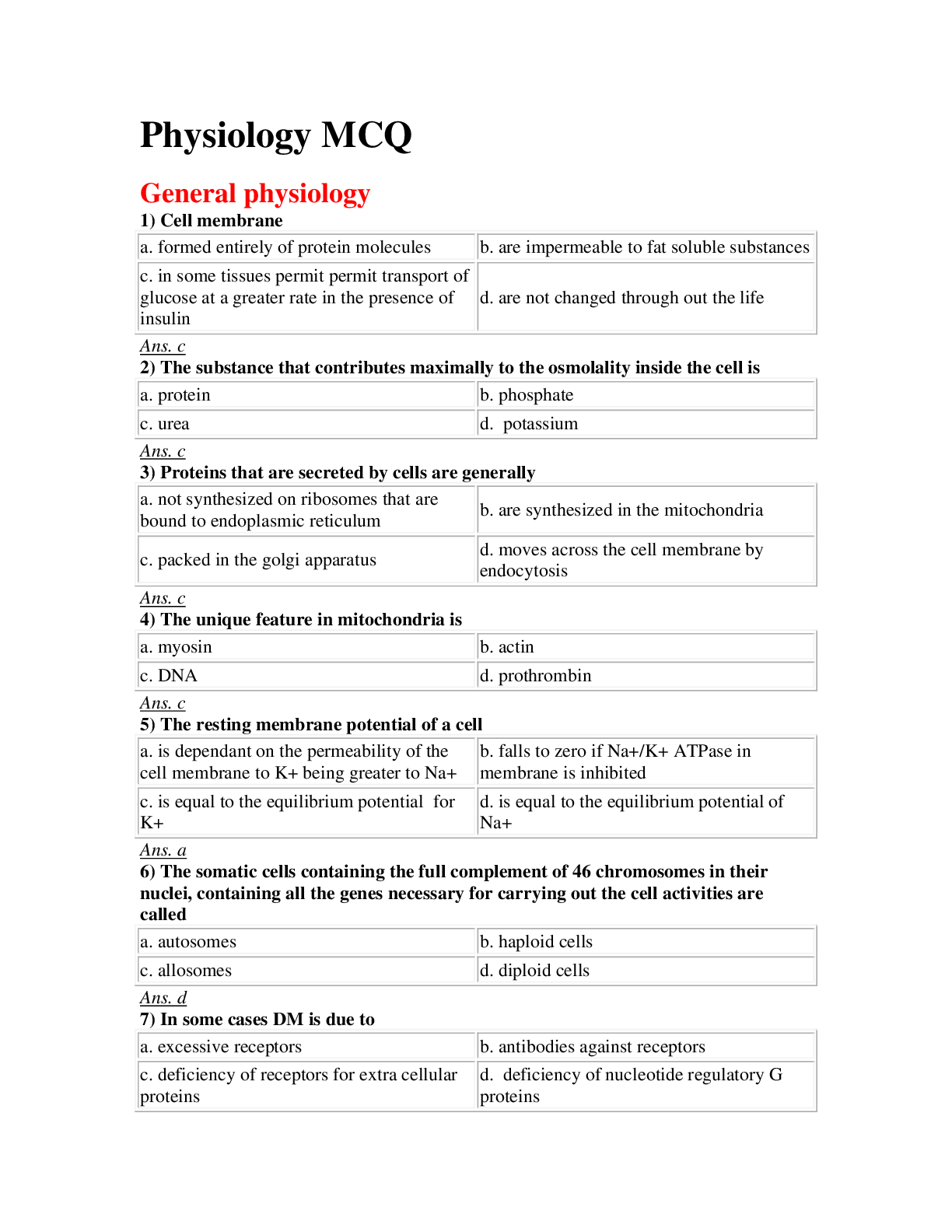
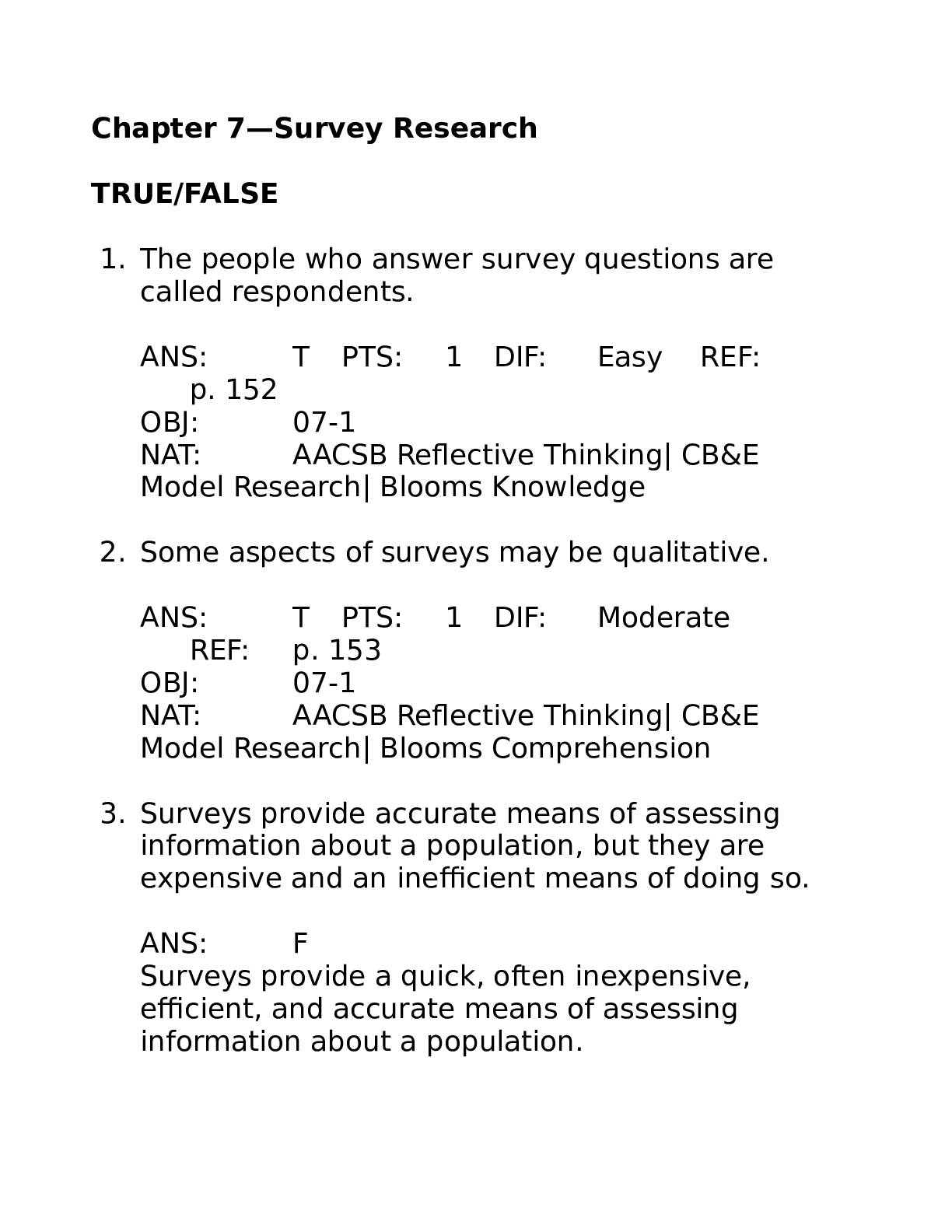

 McCance, Huether - Pathophysiology_ The Biological Basis for Disease in Adults and Children TEST BANK.png)

